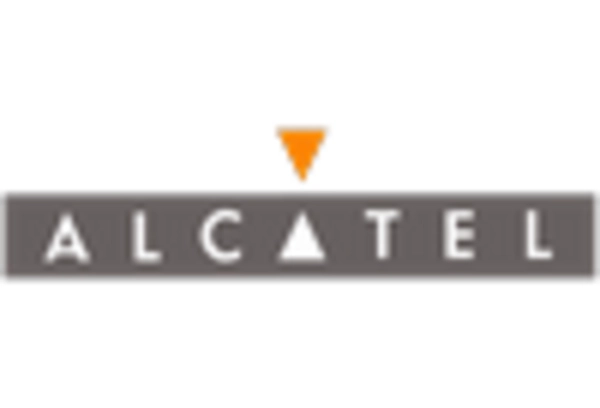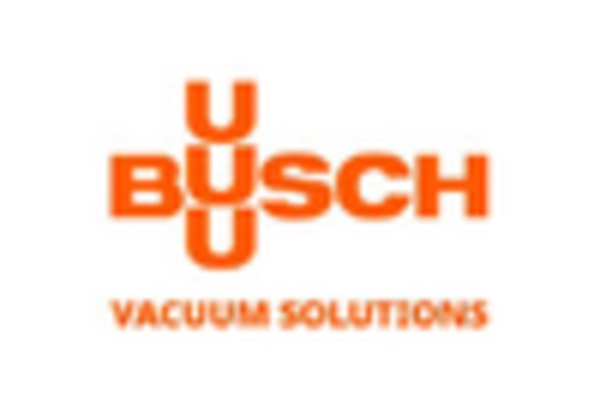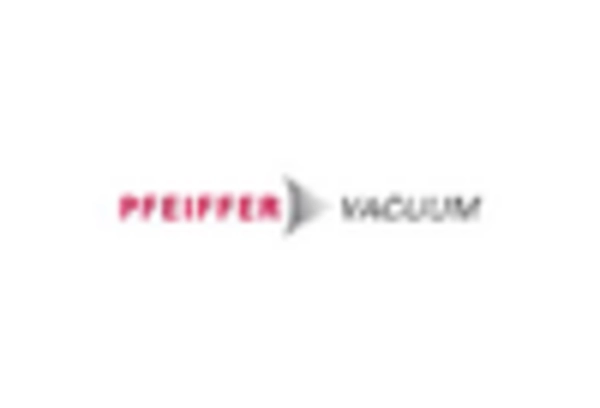Rising Research and Development Activities
The laboratory vacuum-pumps market in South Korea is experiencing growth due to an increase in research and development activities across various sectors. The government has been investing heavily in scientific research, which has led to a surge in the establishment of research institutions and laboratories. This trend is expected to drive the demand for laboratory vacuum pumps, as they are essential for various applications, including material testing and chemical analysis. In 2025, the R&D expenditure in South Korea is projected to reach approximately $80 billion, indicating a robust environment for laboratory equipment procurement. Consequently, the laboratory vacuum-pumps market is likely to benefit from this heightened focus on innovation and technological advancement.
Technological Innovations in Vacuum Pump Design
Technological innovations in vacuum pump design are playing a pivotal role in shaping the laboratory vacuum-pumps market. Manufacturers are increasingly focusing on developing advanced vacuum pump systems that offer enhanced efficiency, reliability, and energy savings. For instance, the introduction of oil-free and dry vacuum pumps is gaining traction due to their environmental benefits and lower maintenance costs. As the demand for high-performance laboratory equipment continues to rise, the laboratory vacuum-pumps market is likely to see a shift towards these innovative solutions. This trend not only addresses the needs of modern laboratories but also aligns with the growing emphasis on sustainability and operational efficiency.
Increased Focus on Quality Control and Compliance
The laboratory vacuum-pumps market is also being driven by an increased focus on quality control and compliance within various industries. Regulatory bodies in South Korea are imposing stricter guidelines on laboratory practices, necessitating the use of reliable and efficient vacuum pumps for accurate results. Industries such as food and beverage, pharmaceuticals, and chemicals are particularly affected by these regulations, leading to a heightened demand for laboratory vacuum pumps that meet compliance standards. As companies strive to maintain quality assurance, the laboratory vacuum-pumps market is expected to witness a surge in demand for equipment that adheres to these stringent requirements.
Expansion of Pharmaceutical and Biotechnology Sectors
The pharmaceutical and biotechnology sectors in South Korea are expanding rapidly, contributing to the growth of the laboratory vacuum-pumps market. With the increasing number of drug development projects and biopharmaceutical manufacturing, the demand for laboratory vacuum pumps is expected to rise significantly. In 2025, the pharmaceutical market in South Korea is anticipated to reach $30 billion, reflecting a compound annual growth rate (CAGR) of around 5%. This growth is likely to create a substantial need for laboratory vacuum pumps, which are critical for processes such as solvent removal and concentration of samples. As a result, the laboratory vacuum-pumps market is poised to capitalize on the burgeoning pharmaceutical landscape.
Growth of Educational Institutions and Training Facilities
The growth of educational institutions and training facilities in South Korea is contributing to the expansion of the laboratory vacuum-pumps market. As universities and technical colleges enhance their science and engineering programs, the need for modern laboratory equipment, including vacuum pumps, is increasing. In 2025, the number of higher education institutions in South Korea is projected to exceed 400, fostering a robust environment for practical training and research. This trend indicates a rising demand for laboratory vacuum pumps, as they are integral to various educational experiments and research projects. Consequently, the laboratory vacuum-pumps market is likely to benefit from this educational expansion.

















Leave a Comment